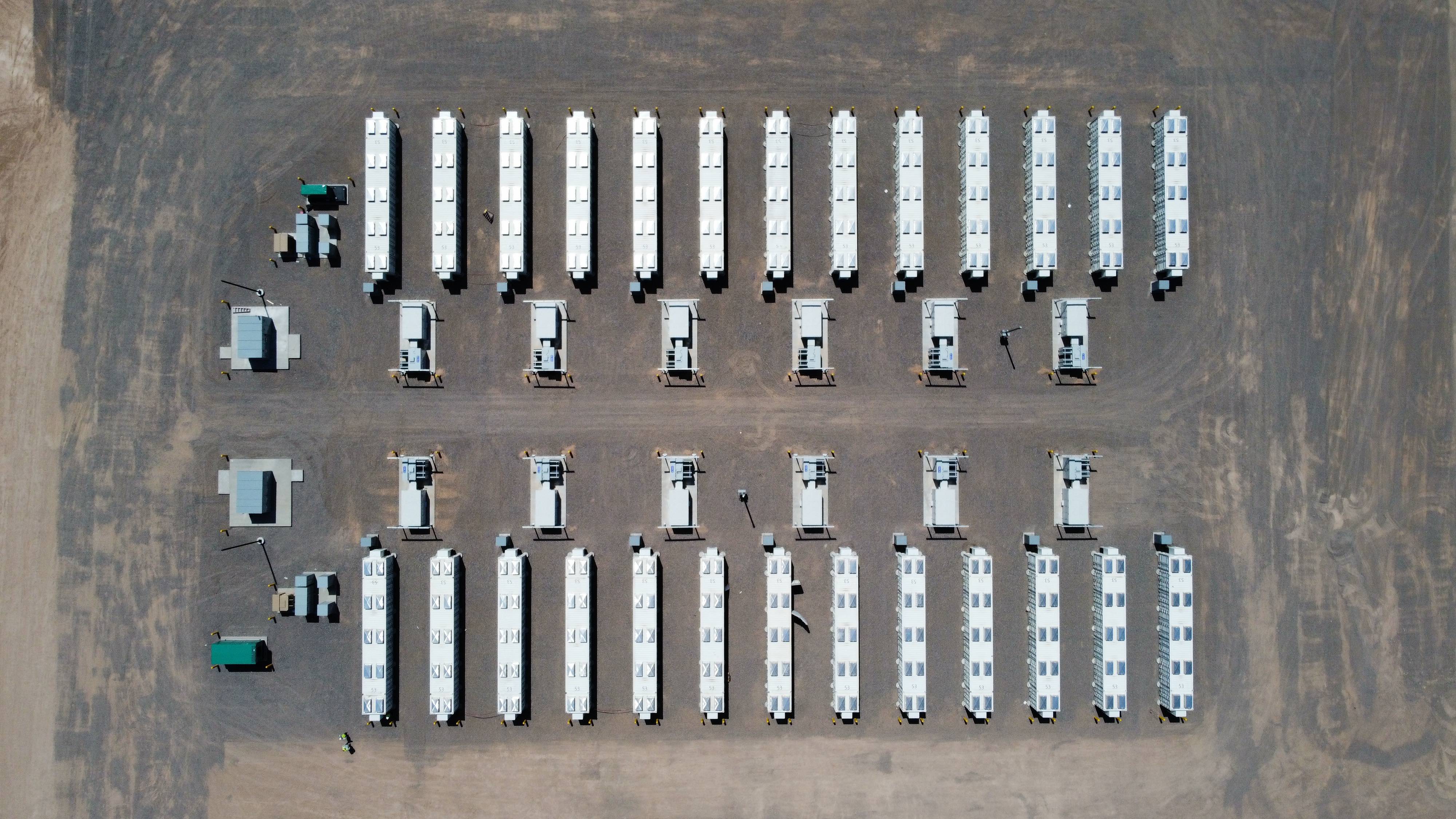Clean Energy
Expertise
Projects
Invenergy Services
Partners
Who We Are
News & Insights

Apr 05, 2024
power lines
What you should know about energy storage safety
by Invenergy
Energy storage systems bring greater reliability, flexibility and resilience to the electric grid. And as more renewable energy sources like wind and solar continue to penetrate the market, energy storage is an excellent complement to these power sources because of its ability to save excess energy and deploy it when and where more power is needed.
Like any other energy center, energy storage sites require responsible stewardship to operate effectively. Reza Talieh, renewable project engineer at Invenergy, took some time recently to discuss how Invenergy handles energy storage safety for the 21 projects in its current portfolio, the company’s dedication to training first responders, and how he and his team continually strive to be leaders in energy storage safety.
What is Invenergy’s approach to energy storage safety?
RT: There’s definitely a culture of safety at Invenergy. We start off our construction meetings by highlighting recent “safety moments,” or times where our people were able to avoid or minimize potential issues by following proper safety protocols. This reinforces our safety culture and makes sure we are pausing to think about safety topics on a daily basis.
For our energy storage sites, we commission safety studies for each of our projects. Using the findings from those reports, we work with experts and local first responders to develop emergency response plans, so we’re prepared for a wide range of situations.
Who makes up a typical team at one of Invenergy’s energy storage sites?
RT: We have different folks involved throughout the engineering, construction, and operations of an energy storage site. Everyone working on site is required to understand how the emergency response plans we put in place work and the sequence of what needs to happen in case of an emergency.
Our engineers and project management teams do a lot of work commissioning fire protection studies with qualified consultants to ensure our sites are safe. These reports look at what’s going to be put in the ground, what the safety code requires, and how we’ll meet or exceed those requirements.
Then we have our environmental health and safety team, which is responsible for developing emergency response plans for personnel at our sites. Those cover what risks you might encounter at different sites, how to react in different situations, who to call, and so on. This team and engineering will work with consultants to develop training and an emergency response plan specifically for first responders.
Lastly, on the operations side, we designate the first points of contact for Invenergy personnel and first responders if an emergency occurs on site. There is always an employee assigned to the project who can help make technical decisions with first responders and interpret project-specific alarms and data.
Are there any projects you’ve worked on that you feel showcase Invenergy’s commitment to energy storage safety?
RT: We have a portfolio of energy storage projects we call “Arizona Sun.” To achieve commercial operations with those projects, we adhered to Arizona Public Services’ energy storage safety standards, which are some of the most stringent and well-defined standards in the industry. And while we developed Arizona Sun, we also commissioned studies that are still referenced in the industry safety development groups today as we continue to develop better studies and methodologies for researching batteries. So, I think those are some of the biggest examples of how we are a leader in safety in the industry.
How does Invenergy build on the clean energy industry’s storage safety standards to enhance safety at our project sites?
RT: It’s a twofold approach. First, the industry follows safety codes that require batteries to go through fire testing. So, battery manufacturers see how batteries withstand fire under different scenarios. Manufacturers can also take the information they gather during testing to add additional safety features to their batteries. All of this leads to the most reliable products entering the market and Invenergy making an informed selection during procurement.
Then it comes down to how we design our energy storage projects to maximize safety. That involves measures like ensuring we put enough space between battery enclosures on our project sites, which can help limit the scope and duration of any potential issues. Because we think about risks early on, it really helps us plan projects sites in the safest way.
What misconceptions do you think people have about energy storage safety?
RT: Energy storage as a technology is safer than what might be reported. Each group of batteries has its own sensors and detectors for when something goes wrong, and the enclosures are specialized to promote the safe operation of the batteries. Secondly, there’s nothing specialized or unique about the equipment first responders need to manage battery fires. Our training identifies equipment and techniques that should be familiar to first responders to handle battery events. Although the utility-scale lithium-ion batteries used at energy storage sites are different, this is the same type of technology we trust in our phones, laptops and electric scooters.
How does Invenergy decommission energy storage units at the end of their lifespans?
RT: We develop a decommissioning plan for energy storage projects, including guidance on packaging, transportation, and recycling, and measures for handling damaged batteries.
Once batteries reach the end of their lifespans, Invenergy works with various decommissioning service companies to find the optimal solution for responsibly recycling an energy storage project in accordance with applicable laws and regulations. If batteries can’t be reused, they are disassembled, packaged and transported to one of Invenergy’s recycling partners.
Invenergy recycles its batteries using the most advanced processes to ensure optimal recovery rates and the lowest emissions, and we are committed to pursuing the most environmentally sustainable recycling methods for our energy storage projects.
Learn more about Invenergy’s energy storage portfolio.
Expertise
Projects
Invenergy Services
Partners
News & Insights
© 2023 Invenergy